Riding Bogotá’s TransMiCable
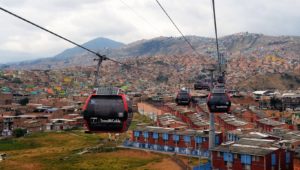
Posted in February, 2019. This first appeared in The Bogotá Post in 2019
An amazing cable car ride to the ridge high above Bogotá giving great views of the city? Most people would consider that a great tourist attraction, like Cerro Monserrate.
But no, the TransMiCable is actually a mass public transport system and lifeline for poor communities perched on barren hills on the south side of the city. And the 13-minute ride is transforming the lives of many people there. And actually, it is also rapidly becoming a tourist attraction, particularly for socially-minded travellers who are interested in people’s everyday lives in Colombia. So grab your ticket and go.

The TransMiCable soars over the barrio Manitas in the south of Bogotá
But first let’s talk about el sur of Bogota:
Like most cities Bogotá has its ‘no-go’ areas and most of those are in the south of the city, or el sur as it’s called. That’s where the majority of the poor, displaced and unemployed live and organised crime and armed groups are based.
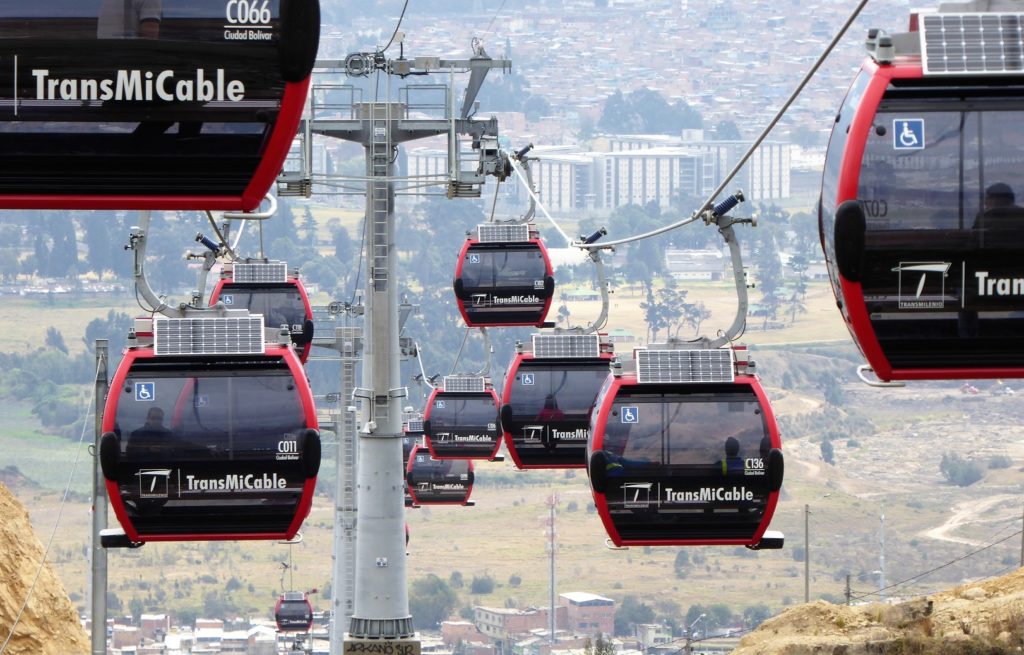
Mass transit at its most innovative
Of course, it’s never good to generalise and there are also nice parts of the south, as well as poor and ‘dangerous’ barrios in the north. But as a general rule most wealthier Colombians – and nearly all foreign visitors – stick to the north.
On the periphery of south side are the even poorer barrios mostly populated by Colombians displaced by violence in their rural and coastal communities – the country has historically the highest violence-displaced population in the world. Many of these areas are proper shanty towns thrown up on waste ground on the barren hills, with dirt-track roads often without proper water or sanitation, and prone to landslides, flooding and worse.
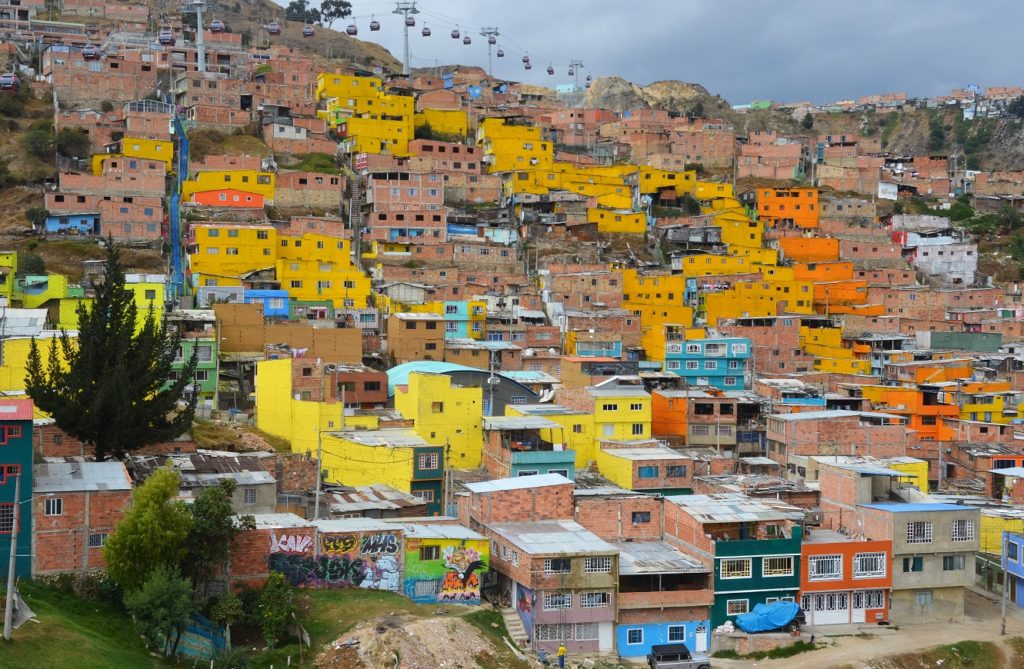
Barrio Manitas
These are often built on precarious hillside without any type of planning permission. Access is tricky because of lack of proper roads, transport is often informal and requires tough cars or minibuses over unpaved roads, then having to travel through the chaos and congestion of Bogotá’s outer roads to reach proper mass transport systems.
That’s where the TransMiCable comes in. One of the great barriers facing these communities is the slog to reach their jobs in the city, sometime commutes of 4 hours a day. People wake at 5am to get out the door on time, and often arrive home at 10pm. Then next day the same again.
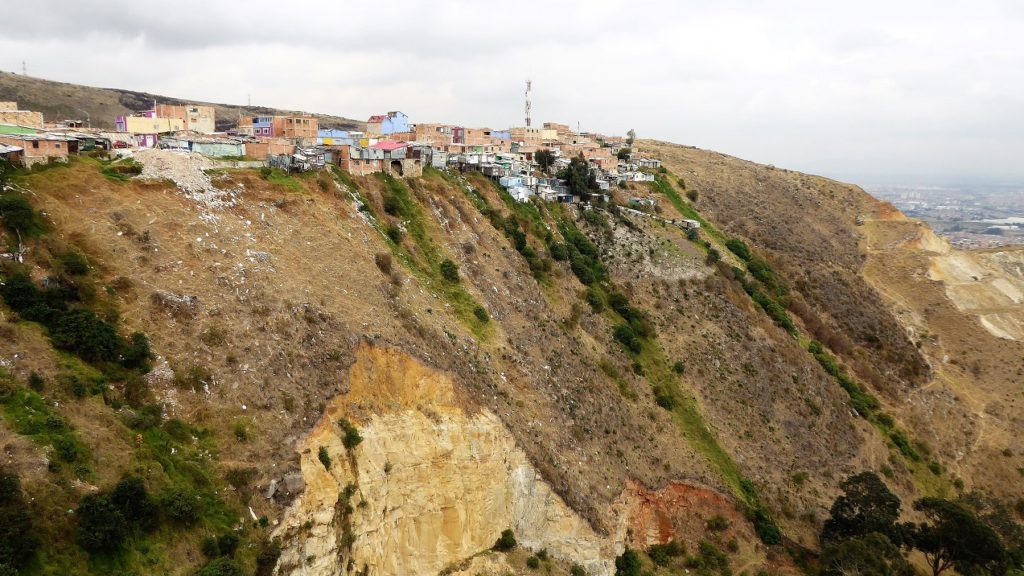
This struggle has a huge impact on family lives. The 13-minute cable car ride from El Paraiso, its highest station, to Portal El Tunal, the mass-transit bus station that connects to the city, saves at least an hour’s bus ride for many low-paid workers.
OK, so here’s some more pictures which tell the story, and the bottom of the page are some practical tips on Riding the TransMiCable.
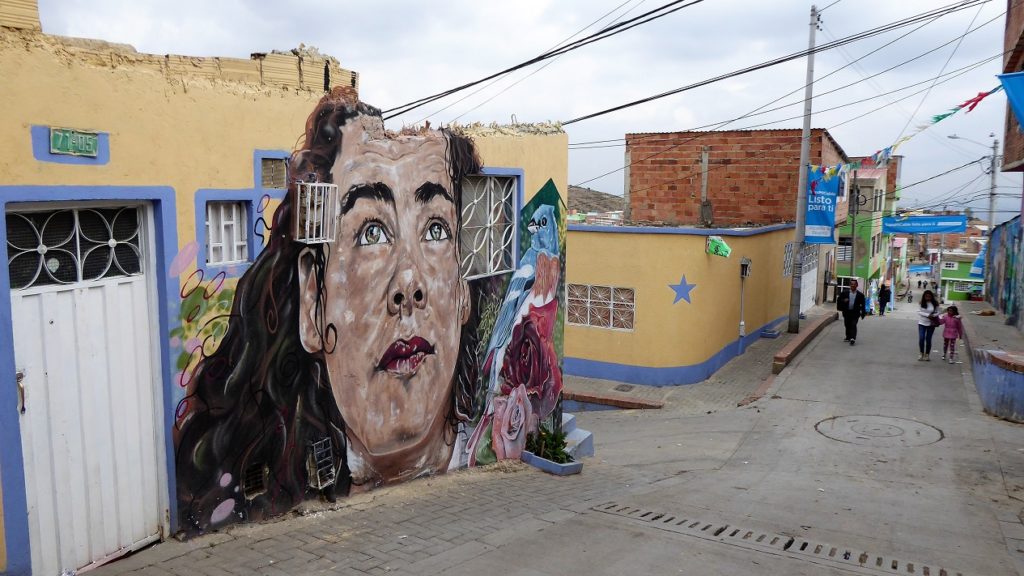
PRACTICAL STUFF: The TransMiCable
The cable car runs from 5am to 10pm every day and forms part of the integrated Transmilenio transport system of ‘bendy buses’ that have their own lanes through Bogotá traffic. The cable car system has 163 cabins with room for 10 pax each, and carries 3,600 people an hour.
The new cable car joins a base station at the Portal El Tunal Transmilenio bus station with cable car stations in three barrios, Juan Pablo II, Manitas and El Paraiso-Mirador. The last station is the uppermost with great views of Bogotá.

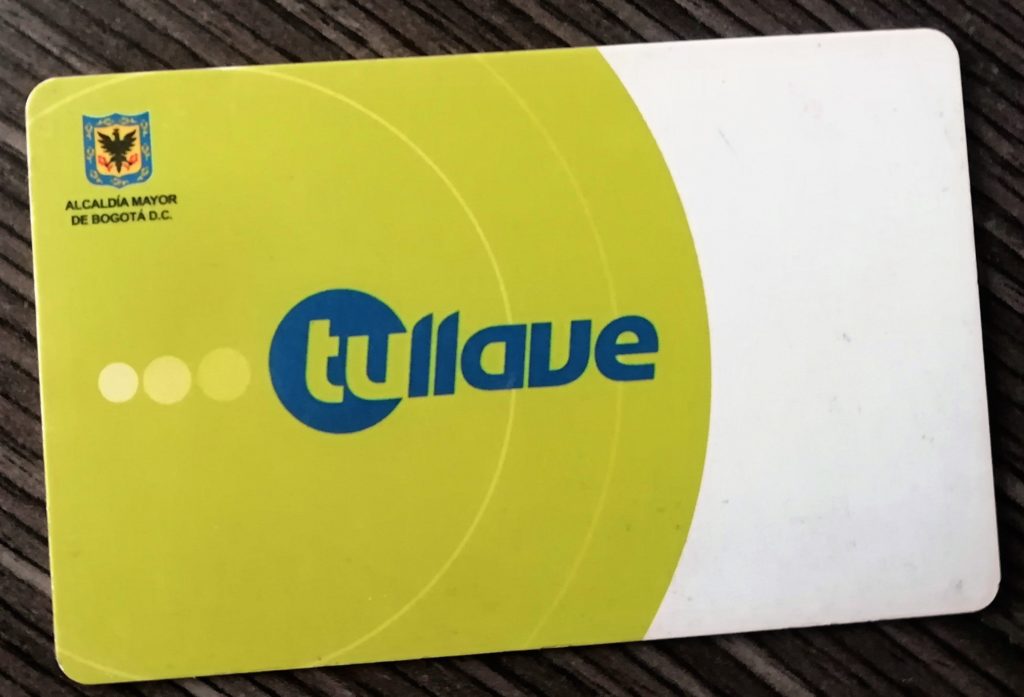
To ride the TransMiCable you need a Tullave card, which you can buy and charge with credit at any Transmilenio bus station. The cost of the cable car is $2300 per trip – around US$0.70.
IS IT SAFE?
The most risky part of the trip is the Transmilenio bus journey to Portal El Tunal. This passes through the some bad barrios in the south of the city, many stations are unattended with broken doors., For this reason if you travel this way ONLY CARRY THE MINIMUM i.e. cash, small pocket camera and a copy (not original) of any personal ID docs (ie passport). Do not wear expensive watch or jewellery. Bring some coins to give beggars and sweet sellers on the bus, this avoids confrontation.
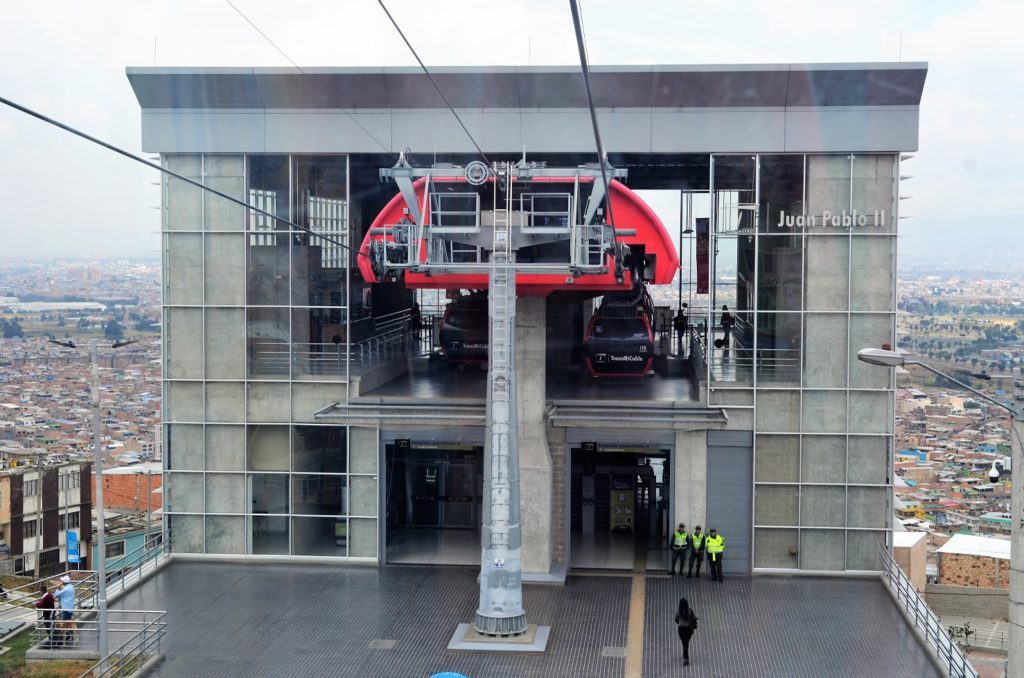
Once you arrive at the El Tunal stay on the station concourse, turn left and walk to far left-hand side of the platform, then take the underground tunnel to the Cable Car Station. There are new toilets in the underpass, and security guards at every corner.
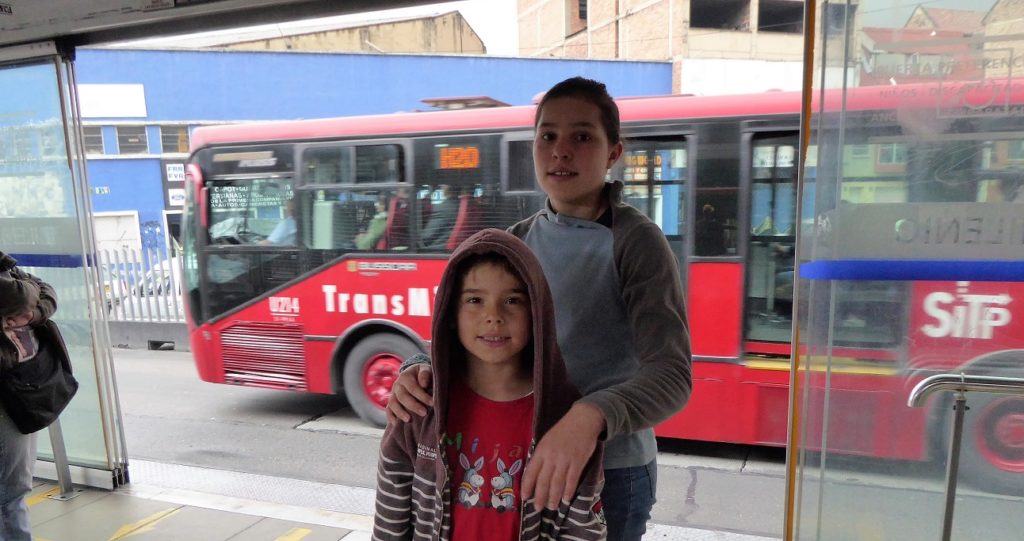
NOTE: you can avoid this risk by taking a taxi or Uber to El Tunal, but it will take much longer through the traffic.
By contrast the TransMiCable is new, well guarded by police and private security guards. Passengers are sometime searched before entering the cabins, which have CCTV and audio links with the next station. So this is very safe.
The barrio around the top station, El Paraiso Mirador, seems safe and there are new cafe and restaurants, and people seem keen to welcome new visitors. Best not to hang around at night.


